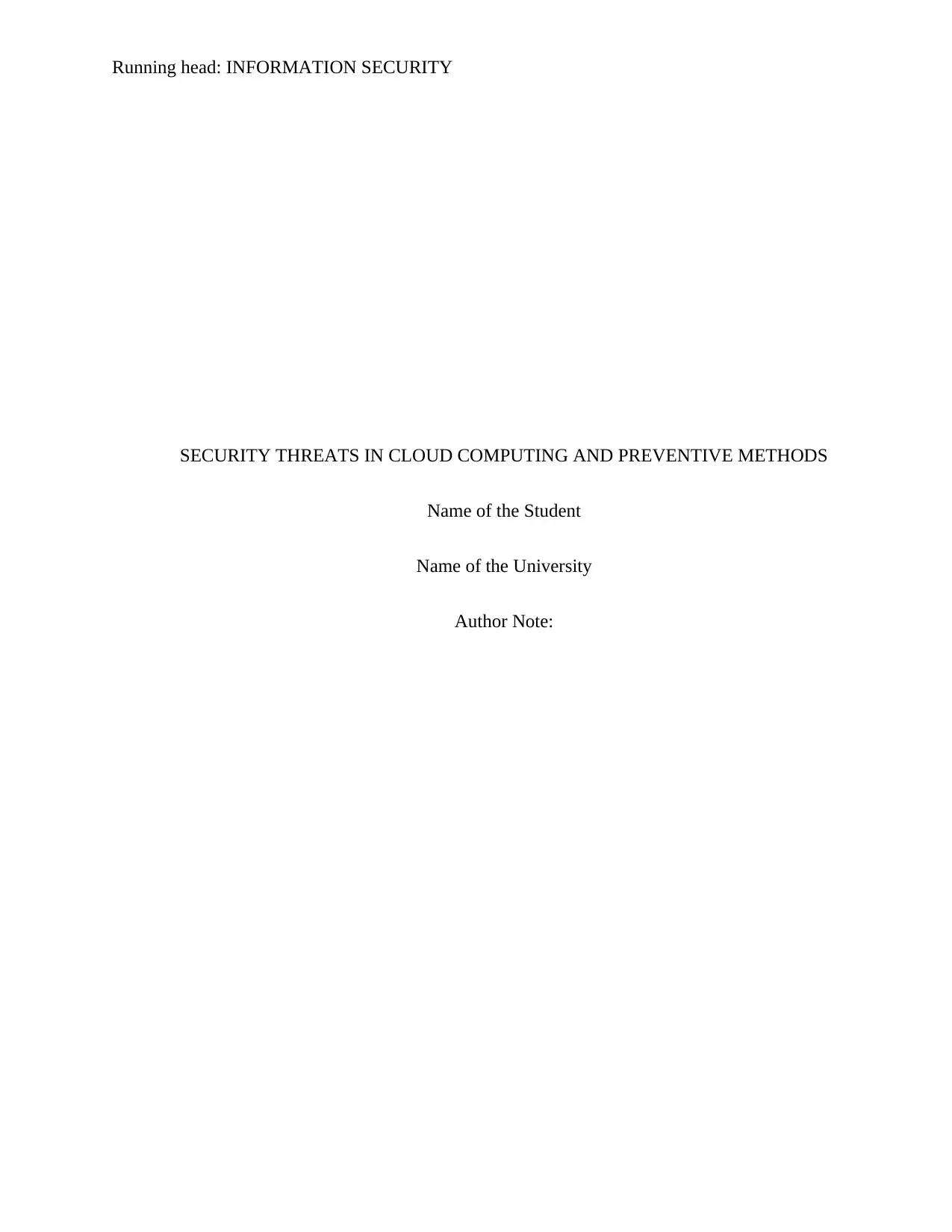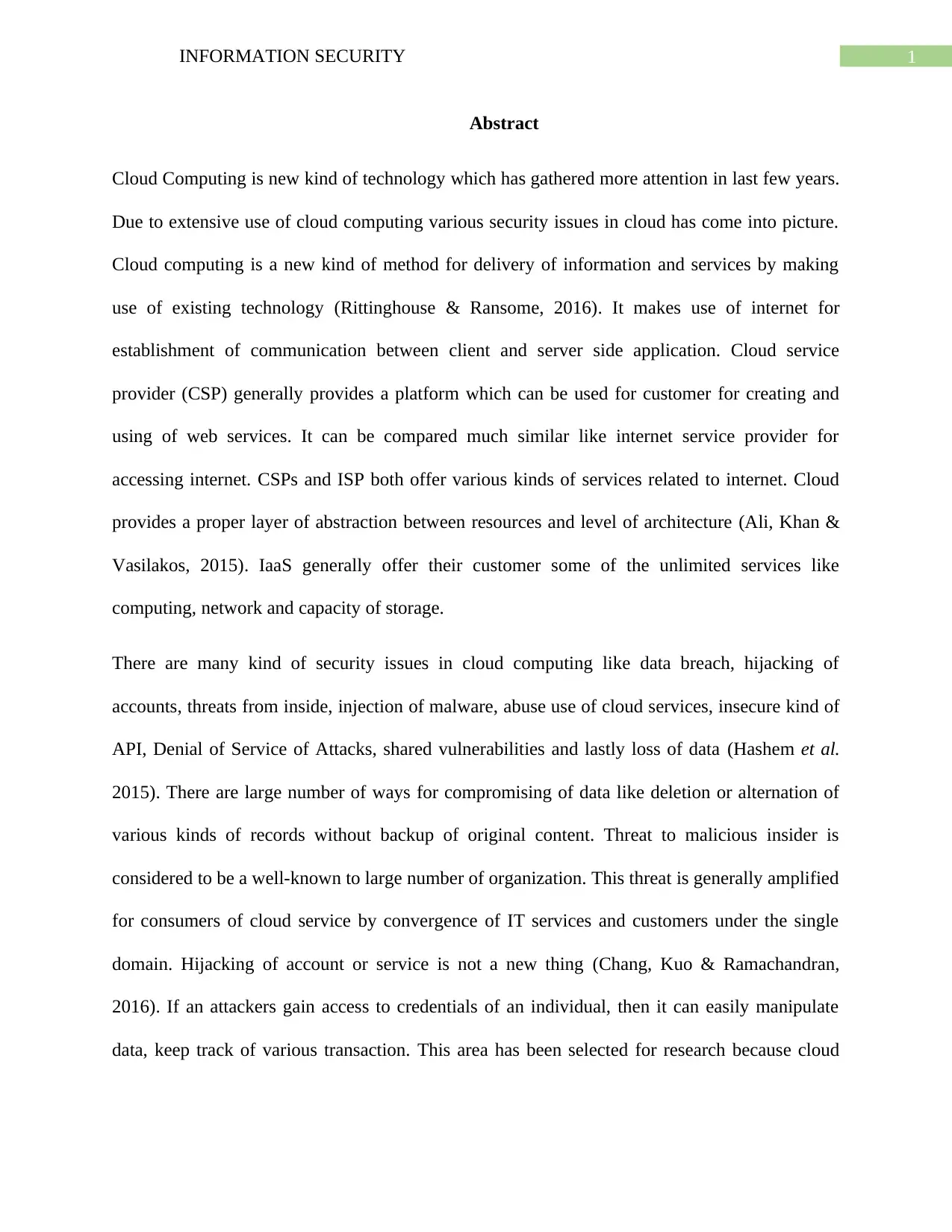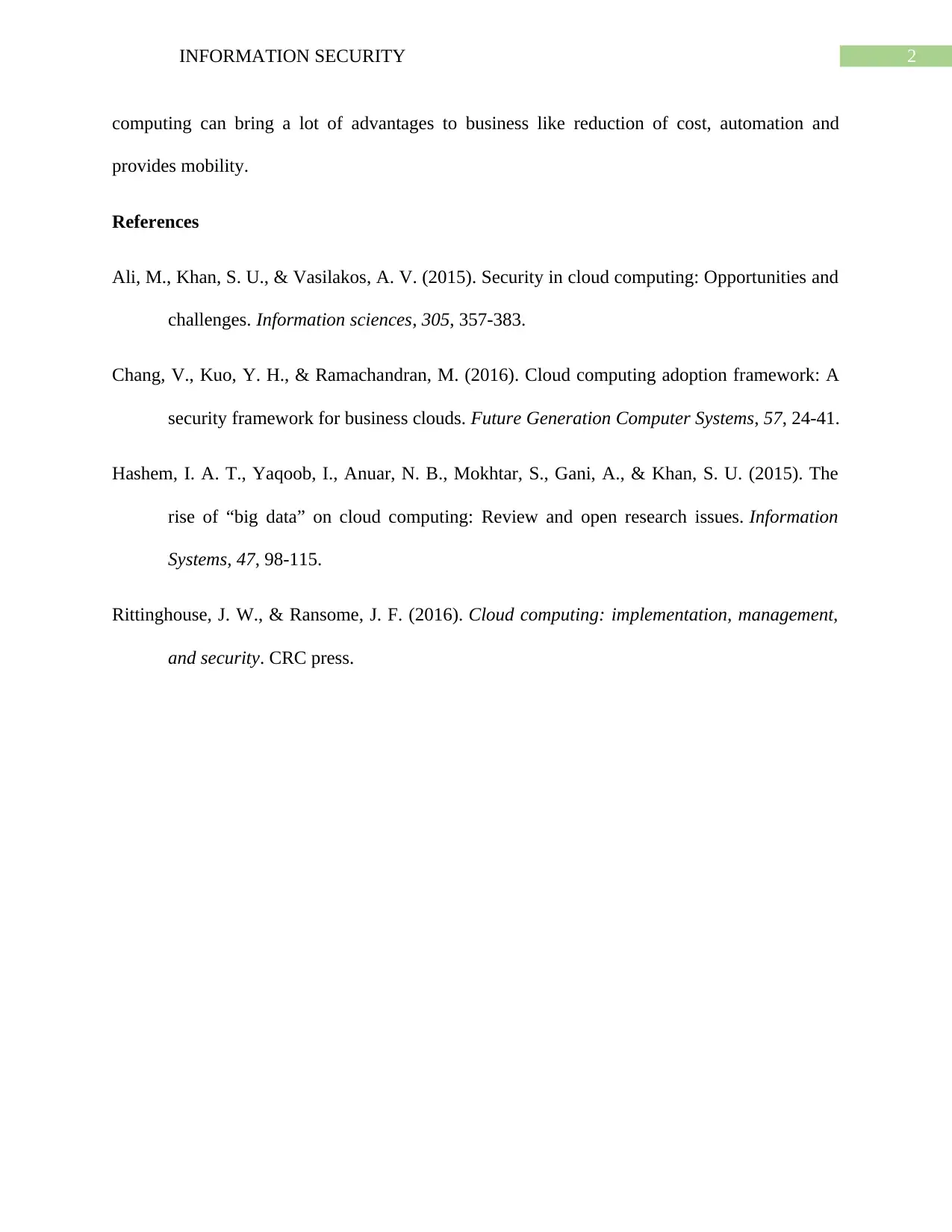Research Report: Security Threats in Cloud Computing & Methods
VerifiedAdded on 2023/06/13
|3
|553
|330
Report
AI Summary
This report examines the security threats prevalent in cloud computing, a technology that has gained significant traction in recent years. It highlights the various security issues that have emerged due to the extensive use of cloud computing, including data breaches, account hijacking, insider threats, malware injection, abuse of cloud services, insecure APIs, denial-of-service attacks, shared vulnerabilities, and data loss. The report emphasizes the importance of understanding these threats to mitigate risks effectively. It references research articles that delve into the opportunities and challenges of security in cloud computing, cloud adoption frameworks, and the rise of big data on cloud platforms. The selection of this research area is motivated by the potential benefits of cloud computing for businesses, such as cost reduction, automation, and enhanced mobility.
1 out of 3








![[object Object]](/_next/static/media/star-bottom.7253800d.svg)